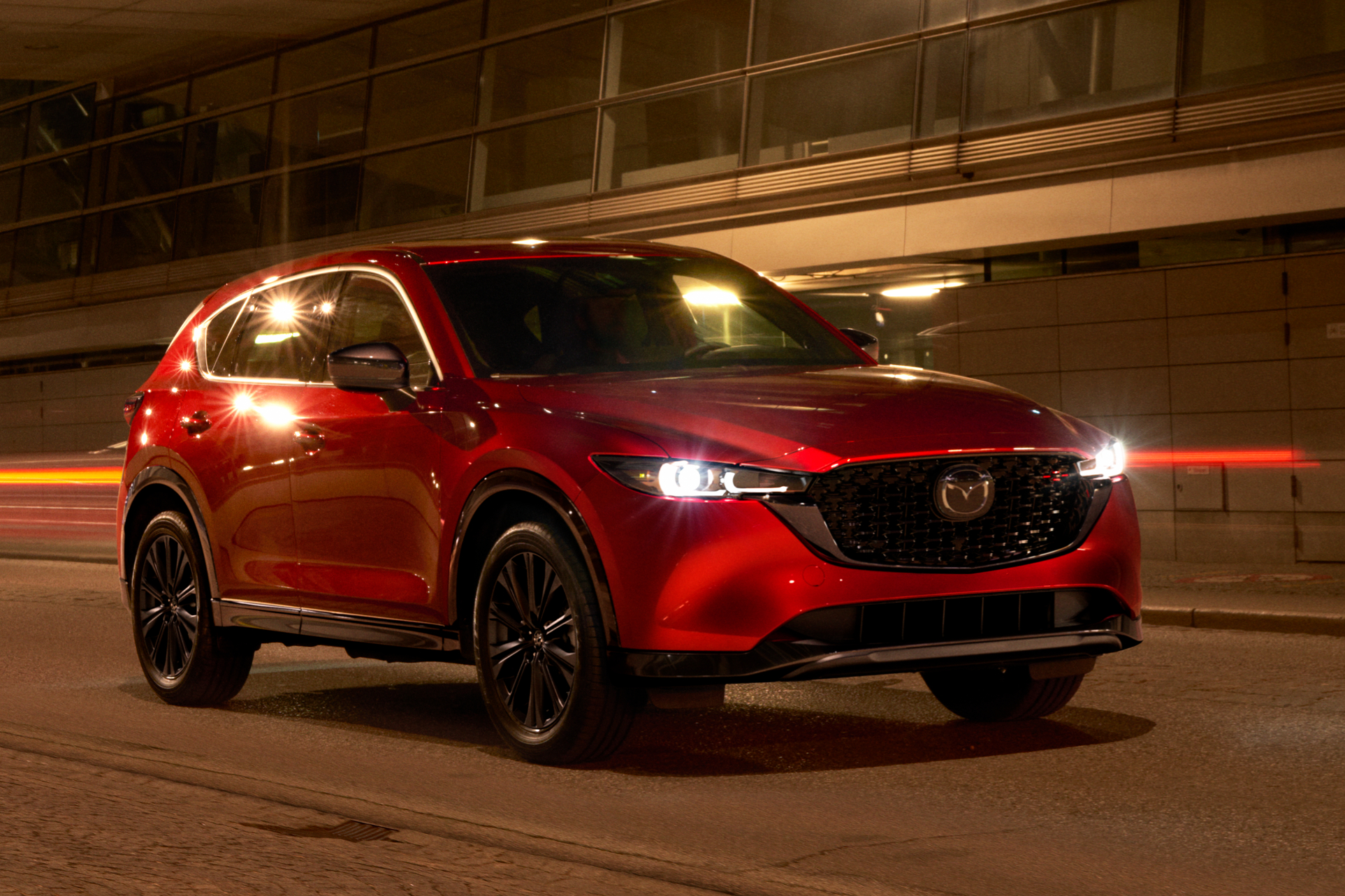
In early 2021, Mazda cut the diesel option from the CX-5 range. It was more expensive than the gas-powered engines, so the uptake wasn't strong. While Mazda wouldn't confirm how many diesel CX-5s were sold in the USA, it stated that it would continue to advance its diesel technology globally as part of a Multi-Solution Powertrain Strategy - which has included hydrogen development as well as the Skyactiv X spark-controlled compression ignition for gasoline.
Mazda's commitment to this strategy has paid off because it's just introduced an all-new diesel engine for the CX-60. The plug-in hybrid CX-60 was unveiled earlier this year as the most powerful Mazda ever, and while it may not be coming to the states, it does give us some insight into what we can expect from the upcoming CX-70 and CX-90. As for the new diesel, it incorporates some impressive technologies.
The all-new 3.3-liter in-line six-cylinder e-Skyactiv D diesel engine produces either 197 or 251 horsepower, depending on whether customers opt for rear- or all-wheel drive. The engine provides up to 406 lb-ft of torque. Why are these figures relatively low compared to other advanced diesel powertrains? Well, Mazda tends to be fairly pragmatic when it comes to its turbocharged engines, aiming for reliability and efficiency over outright power. Put a pin in that efficiency bit.
The most impressive bit is what Mazda calls Distribution-Controlled Partially Premixed Compression Ignition (DCPCI) Technology. Mazda claims this new combustion technology gives this particular diesel powertrain a thermal efficiency of over 40%. Most diesel engines have a thermal efficiency of 30-35%, and that's with turbocharging included. On top of this new DCPCI system, the 3.3-liter inline-six diesel gets a 48-volt mild-hybrid system for improved low-down torque.
The high-output engine, standard on AWD models, is powerful enough to help the midsize Mazda CX-60 run from 0 to 60 mph in 7.4 seconds. At the moment, Mazda only has WLTP fuel consumption figures, which we know aren't as realistic as EPA estimates. Still, according to Mazda's figures, the high-output diesel will only consume 44.3 mpg, while the low-output version can manage 48 mpg. For reference, the Toyota Prius' WLTP estimates are pegged at 57.4 mpg.
Mazda claims this new diesel engine is smoother due to its inline construction, and even though it's bigger than the old 2.2-liter turbocharged diesel used in the CX-5, it weighs the same. The claimed tow rating is 5,512 pounds, which is above average for a crossover of this size.
This all-new diesel engine will arrive in the UK in the first quarter of 2023, but we doubt it will be introduced locally, however, as diesel engines in the US were already on the downward spiral before the Dieselgate scandal hit in 2015. Since then, BMW and Jaguar eventually gave up Stateside, and Chevrolet is the last hold-out. Still, even Chevy only gives you a diesel option if you buy a truck or the Tahoe/Suburban.
Still, we can't help but wonder what this ultra-efficient diesel could do in the CX-70. While America won't get the CX-60, the CX-70 will be a widebody version developed specifically for the US market that will slot in between the CX-5 and CX-9 we presently have. The latter is then slated to be replaced by the CX-90, itself a widebody version of Europe's forthcoming CX-80.
